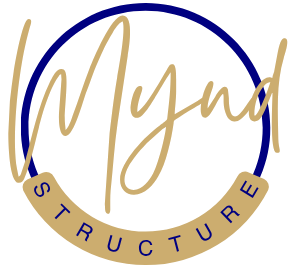September 2024
As the summer draws to a close and the crisp air of September begins to set in, it's the perfect time to refocus and embrace the new opportunities that lie ahead. September isn't just the start of a new season—it's a chance to reignite your passion, set new goals, and take decisive steps toward transforming your career.
After the relaxation and reflection that summer often brings, now is the time to channel that renewed energy into actionable plans. Whether you're looking to advance in your current role, pivot to a new industry, or take on a leadership position, setting clear, achievable goals is your first step toward success. Remember, the goals you set today will guide your actions, fuel your motivation, and shape your career path in the months to come.
But as you set these goals, don’t overlook the power of networking. Mastering the art of networking is essential to unlocking new opportunities, gaining valuable insights, and building the relationships that will support your growth. Networking isn’t just about meeting people; it’s about forming meaningful, mutually beneficial connections that can help propel your career forward.
As we move into this new season, let’s commit to setting bold goals and mastering the skills that will lead to lasting success. September is your opportunity to start fresh, embrace new challenges, and transform your career journey.
Here’s to a season of growth, connection, and achievement!
Dr. Shawn T
Goal Setting
Creating Achievable Career Goals
In this issue, we explore the art of creating achievable career goals and why Using the SMARTEST framework
and structuring them in 30-, 60-, 90-, and 1-3-year increments is the key to seeing tangible results.
Setting structured goals is a crucial step in career development. Goals provide direction, motivate us to take action and serve as benchmarks for progress. However, not all goals are created equal. The SMARTEST framework—Specific, Measurable, Achievable, Relevant, Time-bound, Evaluate, Stretch, Transformational—is widely recognized for its effectiveness in goal setting since it basis is the SMART system of goal-setting. However, SMARTEST has the added depth of evaluation, challenge and transformative impact.
Let’s review the SMARTEST goal-setting model:
Specific: Clearly define what you want to accomplish. Specific goals answer the questions: Who? What? Where? When? and Why?
Measurable: Ensure that your goal is quantifiable, so you can track your progress and know when the goal has been achieved.
Achievable: Set goals that are realistic and attainable, considering your current resources, skills, and time frame.
Relevant: Your goal should be relevant to your broader objectives and aligned with your values and long-term plans.
Time-bound: Establish a clear timeline or deadline for achieving the goal. This adds urgency and helps maintain focus.
Evaluate: Regularly assess your progress towards the goal. Evaluation allows you to see what's working, what isn't, and where you might need to make adjustments.
Stretch: Your goal should push you beyond your comfort zone and require growth. Stretch goals challenge you to go beyond what you initially thought possible, fostering innovation and personal development.
Transformational: Ensure that your goal leads to significant, lasting change. Transformational goals are those that not only achieve a specific outcome but also create a positive shift in your life, career, or organization.
Goals should meet the framework of the SMARTEST goal-setting model because it ensures that the goals are not only well-defined and achievable but also dynamic and transformative. This model helps professionals create goals that are clear, trackable, and aligned with long-term success. The inclusion of regular evaluation and revision ensures that goals remain relevant and adaptable to changing circumstances, while stretching and transformational elements encourage growth beyond comfort zones, leading to significant, lasting impacts. This approach maximizes the potential for success by ensuring that every aspect of goal-setting is considered and optimized.
Incorporating 30-, 60-, 90-, and 1-3-year increments into your goal-setting strategy can lead to significant and sustainable career development. These timeframes provide a balanced approach, combining the immediacy of short-term goals with the vision of long-term aspirations. By grounding your goals in theoretical principles, empirical research, and biblical wisdom, you can embark on a transformative career journey with confidence and clarity.
30 Days: The first 30 days are ideal for short-term, actionable goals. According to habit formation theory, it takes approximately 21 days to form a habit (Lally et al., 2010). A 30-day period allows you to solidify new behaviors and make them part of your routine. Achieving small wins within this timeframe boosts confidence and sets a positive tone for further progress. Proverbs 21:5 (NIV) states, "The plans of the diligent lead to profit as surely as haste leads to poverty," underscoring the importance of careful planning and diligent effort over time.
60 Days: The 60-day mark provides enough time to see the impact of newly adopted habits and strategies. It allows for adjustment and refinement based on initial feedback. Research indicates that the second month is when the novelty of new goals wears off, making it a critical period for reinforcing commitment (Prochaska et al., 1992).
90 Days: A 90-day period is effective for medium-term goals. This timeframe is long enough to make substantial progress yet short enough to maintain focus and urgency. In a survey by the American Society of Training and Development (ASTD), 60% of respondents found 90-day goals most effective for tracking progress and making adjustments (ASTD, 2013). The Temporal Motivation Theory (TMT) suggests that the perceived value of a goal increases as the deadline approaches, making shorter increments like 30, 60, and 90 days highly motivating (Steel & König, 2006).
1-3 Years: Long-term goals spanning 1-3 years are essential for significant career advancements. They provide a broader vision and purpose, helping to align short-term efforts with long-term aspirations. According to Locke and Latham's Goal-Setting Theory, long-term goals are crucial for sustained motivation and performance (Locke & Latham, 2002). A study by the Dominican University of California found that people who write down their goals and share them with a friend are 33% more successful in achieving them compared to those who don't (Matthews, 2015).
References
Lally, P., van Jaarsveld, C. H., Potts, H. W., & Wardle, J. (2010). How are habits formed: Modelling habit formation in the real world. European Journal of Social Psychology, 40(6), 998-1009.
Prochaska, J. O., DiClemente, C. C., & Norcross, J. C. (1992). In search of how people change: Applications to addictive behaviors. American Psychologist, 47(9), 1102.
ASTD (2013). American Society of Training and Development survey on goal setting.
Locke, E. A., & Latham, G. P. (2002). Building a practically useful theory of goal setting and task motivation: A 35-year odyssey. American Psychologist, 57(9), 705-717.
Steel, P., & König, C. J. (2006). Integrating theories of motivation. Academy of Management Review, 31(4), 889-913.
Matthews, G. (2015). Goal achievement study: Dominican University of California.
Inspiration Corner
Imagine trying to navigate a ship without a clear destination. No matter how advanced the vessel or how skilled the crew, without a clear course, the journey becomes aimless. This is exactly how our careers can feel when we lack focus and a well-defined vision.
Dr. Myles Monroe, a renowned teacher and thought leader, delves into the transformative power of focus and the mastery of vision. His teachings emphasize that without a clear and compelling vision, our efforts can become scattered, leading to burnout, frustration, and unrealized potential.
In today’s fast-paced world, it’s easy to get caught up in the noise, losing sight of what truly matters in our professional lives. Monroe’s insights remind us that by sharpening our focus and committing to our vision, we can align our actions with our true purpose. This alignment is not just a key to career success, but also to finding fulfillment in the work we do.
I invite you to take a moment to immerse yourself in Dr. Monroe’s teachings. Let his wisdom guide you in clarifying your vision and focusing your efforts, so that you can not only achieve your career goals but also make a meaningful impact in your field.
5-Week Business Networking Challenge
In this challenge, each week you will engage in a simple yet powerful activity to enhance your networking skills and expand your professional connections. Whether you’re just starting or looking to deepen your network, this challenge will provide actionable strategies to help you grow.
The week will start on Sunday, and it is my suggestion that you plan your activities for the week’s challenge on this day. At the end of the challenge, Mynd Structure will go live so we can talk about our experiences and learn from one another.
Please feel free to reach out to me at info@myndstructure to share your insights during the challenge and give praise reports. I will be checking in on you!
Week 1 – September 1: Define Your Networking Goals
Objective: Clarify what you want to achieve through networking.
Action Steps:
Write down your top 3 networking goals. Do you want to find a mentor, connect with potential clients, or explore new career opportunities?
Identify 2-3 key individuals or types of professionals who can help you reach these goals.
Set a specific outcome you hope to achieve from this challenge.
Week 2 – September 8: Optimize Your LinkedIn Profile
Objective: Make your online presence attractive and engaging.
Action Steps:
Update your LinkedIn headline to clearly reflect your professional identity and goals.
Refresh your profile summary with a focus on what you bring to the table and what you're looking for.
Add any recent achievements, certifications, or skills to your profile.
Week 3 – September 15: Engage with Your Existing Network
Objective: Strengthen your current connections.
Action Steps:
Reach out to 3-5 existing contacts to reconnect. Share a relevant article, congratulate them on a recent achievement, or simply check in.
Comment thoughtfully on posts from people in your network. Aim to provide value or start a conversation.
Send a thank-you note to someone who has supported your career or provided valuable advice.
Week 4 – September 22: Expand Your Network
Objective: Build new connections aligned with your goals.
Action Steps:
Identify 10 new people to connect with on LinkedIn. Look for individuals in your industry, mutual connections, or those who inspire you.
Reach out to the top 5 people on your list. Personalize your connection requests with a short message explaining why you’d like to connect.
Join a relevant LinkedIn group or online community where you can engage with like-minded professionals.
Week 5 – September 29: Plan for Long-Term Networking Success
Objective: Develop a sustainable networking habit.
Upcoming events
-
Career Blueprinting Bootcamp
10.04 7:00-8:00PM
In this 8-week bootcamp, you will gain clarity, confidence, and direction in your professional journey. Sign up on the website under Coaching.
-
Unlock Your Calling Masterclass
09.06 7:00-9:00PM
This 2-day masterclass aims to empower individuals who feel unfulfilled in their current job/career by helping them understand purpose and discover calling.
-
Career Exploration One-on-One
3 one-hour 1:1 sessions.
This coaching program is your compass, and provides tool and tips for strategic career planning.

